This is a task sheet with activities that invited the students to work on the mosaic 'The Ocean's God' from Portugal. Through these tasks the students realised a thorough analysis of the mosaic covering its history,artistic style and geometry features.
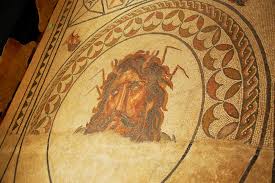
The Ocean´s God- I
Mosaic from Faro (capital of the Algarve), Portugal
- Historical background of the mosaic.
- Artistic background of the mosaic.
The mosaic of oceanus was discovered in 1926 and extracted in 1976, already partially
damaged by work done 50 years previously. The image of god Oceanus - flanked on the upper
side of the personification of the winds of the West (Zephirus) and North (Boreas) -
occupies the center of an enormous floor with geometric and vegetable motives that was placed
in a room of a public building. At the room's entrance, in the beginning of the floor, were identified
the four citizens of the civitas of Ossonoba who comissioned the work.
The characteristics of a port city transformed Ossonoba (Faro, the capital of the Algarve) into a cosmopolitan center where, by sea,
multiple cultural and religious influences practised in the East and North of Africa arrived.
The mosaic of Oceanus reflects the TUnisian artistic style, from where many products and ideas originated.
The proliferation of some of these ideas were responsible for the appointment of a bishop in early 4th Century,
proving that the Christian cult was already deeply implanted in the region and existed alongside several pagan cults.
After the fall of the Roman Empire in the 5th Century,
the cities continued to be pouplated, even though their
dimensions had the tendency become smaller, Ossonoba was no exception.
Now ruled by a religious elite that replaced the old local aristocracy, Ossonoba
continues with it commercial exchanges, affirming itself as the main urban center
of the region, when, in the 8th Century, it became ruled by Islamic peoples.
Try to reproduce a part of the pattern of the mosaic following the steps below.
Activity 1: Drawing 24 circles
- A3 paper sheetPaper, Straightedge, Compass, Protactor and Pencil-Pen.
- Mark a point O. Place the compass at the point O and draw two concentric circles, C1 and C2.
- If we consider ” r” the radium of the smaller circle, C2, and “d” the diameter of each one of the 24 circles, think how you can find "d"
- Trace a radium [OA] of the circle C2. Place the compass point at point A and draw a circle, C3, with diameter “d” .
- Draw other circles with the same diameter along the circle C2. For such, do the rotation of the point A with center O and angle 15º and find the center of the second circle , c4. (Justifies that the angle of rotation is 15º)
Activity 2: Creating “hearts”
- Repeat this process to draw the 24 circles.
- Create hearts in which one of the 24 circles.
What is the next step that you need to take so that the part of the pattern from the Ocean´s God mosaic appears?
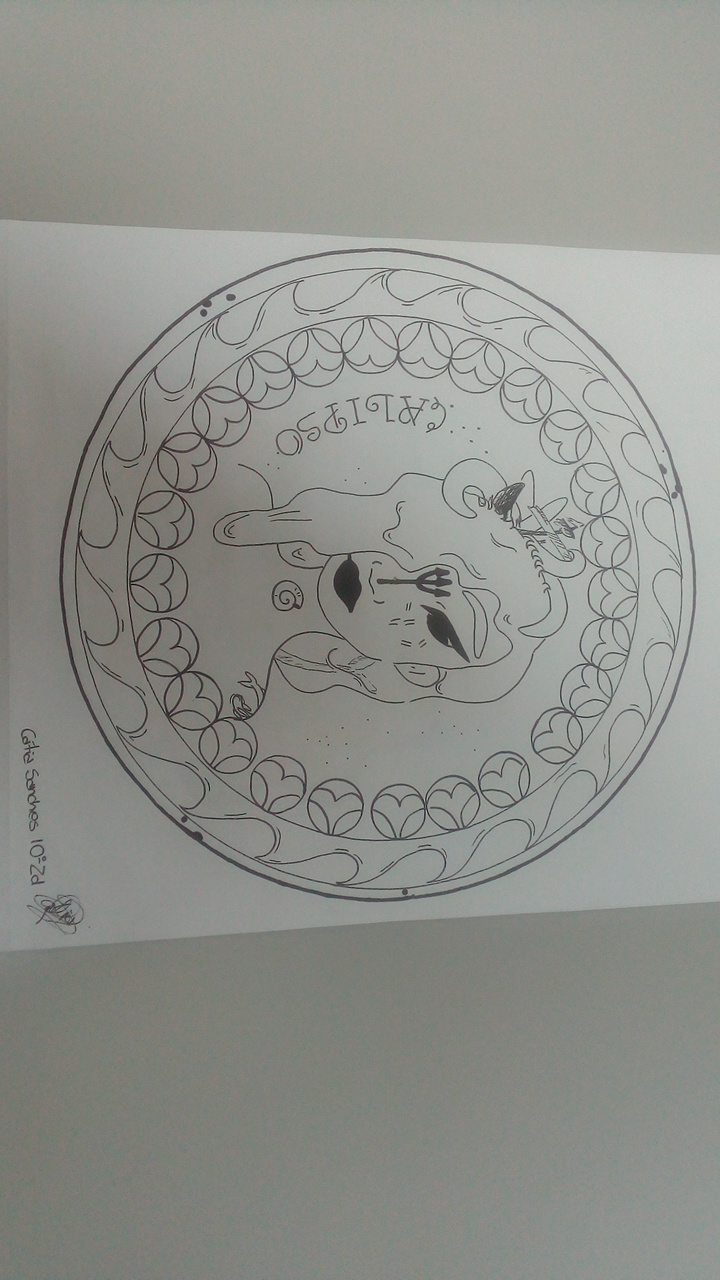
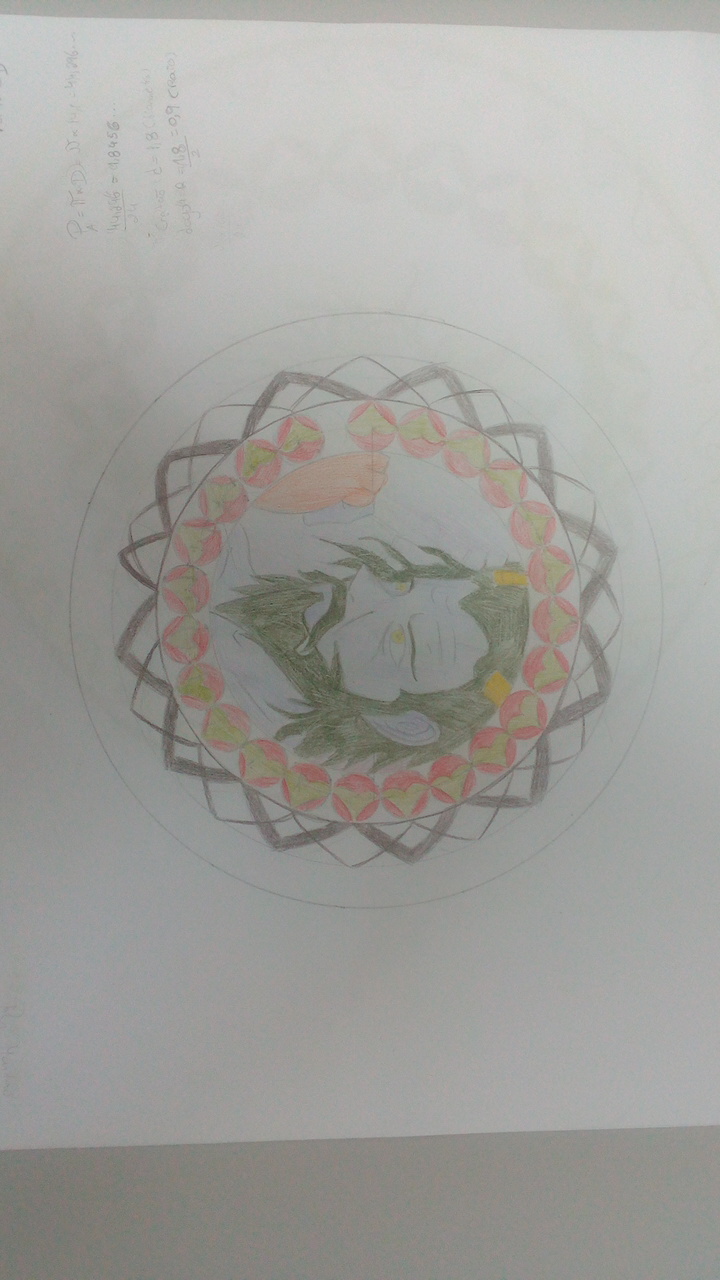
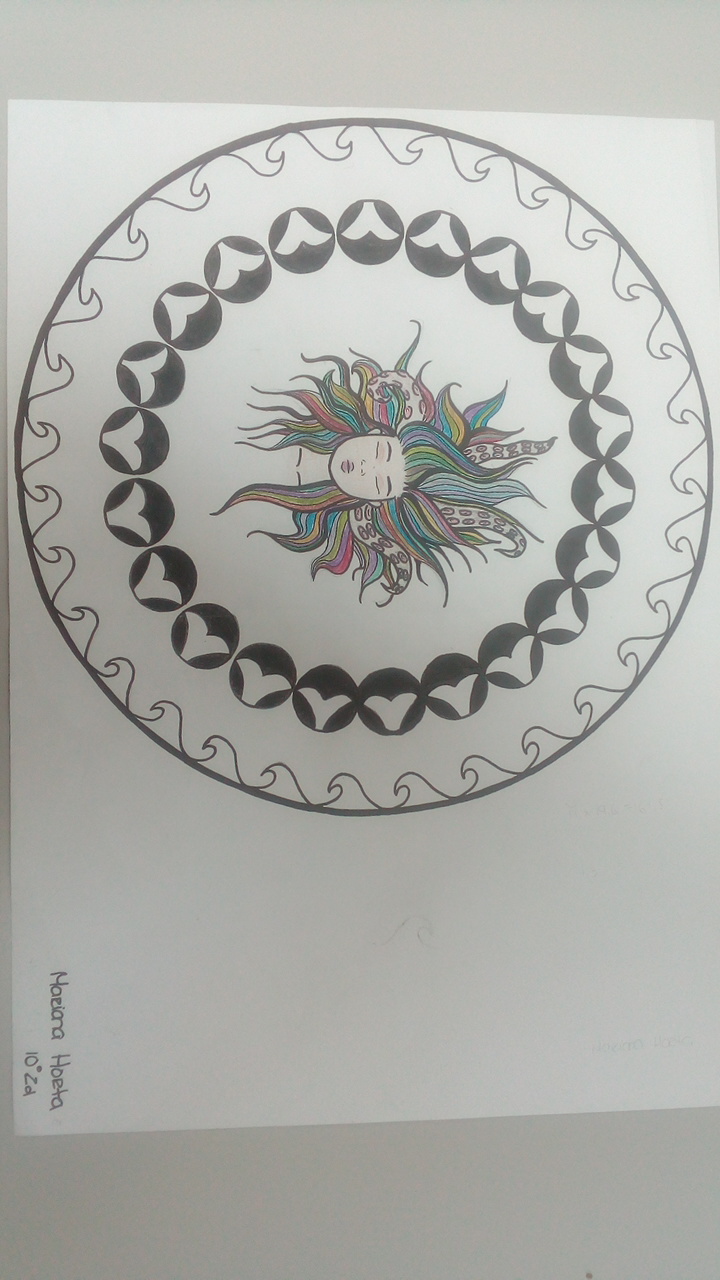
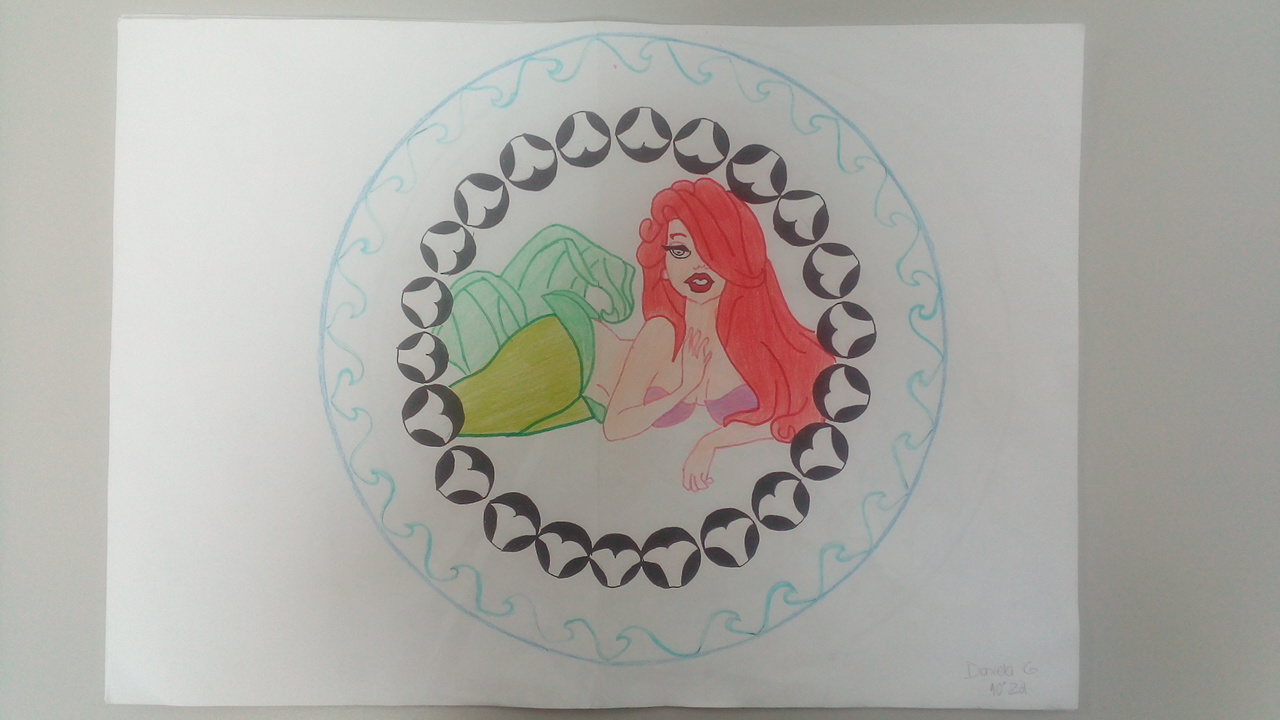
The Ocean's God I-Constuction of pattern with Geogebra
First of all we will descibe the steps of the construction and then we will create the pattern
Steps of the construction
1. I draw a circle with a random radius r and a centre O, on which the centres of the 24 circles are found.

2. I divide the big circle in 24 equal arcs (to find the circles of the smaller circles). To make the first small circle I calculate a central angle of 7,5 degrees. (I repeat the procedure 24 times) and I make circles with centres Ti, i=1,2,….24.



3. Let us take that each circle has a radius p. I make a circle with a centre O and a radius p +r, which osculates on the small circles and the tangency points divide the semi-circles of the small circles into two equal arcs.

4. Let us take that K and L are the tangency points of two tangent small circles (T1, p) and (T2, p) with the circle (O, P+r) and M the shared point of (T1, p) and (T2, p).

5. I find the perpendicular bisectors of ΚΜ and LΜ. Let us take that S is the intersection point of the perpendicular bisectors.

6. Using the intersection point of the perpendicular bisectors as the centre, I draw arcs (MK, ML). So two arcs are formed.

7. I repeat the procedure for all the circles Ti, i=1,2,….24.

8. I draw semi-circles with a diameter p.

9. I erase the circle where the centres of (Ti, p) are found.

10. I make a circle (O,r-p), a circle (O, p+r+x) and a circle (O, p+r+y).

Here is the implementention of pattern with Geogebra